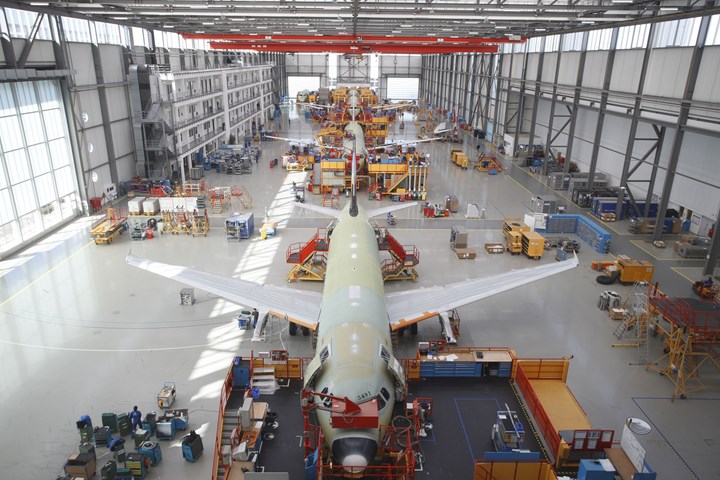Airbus updates A320, A220 production rates
Market environment responses will see current A320 and A220 production rate plans slowly ramp up as 2021 progresses. Airbus expects the commercial aircraft market to return to pre-COVID-19 levels by 2023-2025.

Photo Credit: Airbus
Airbus (Toulouse, France) reported on Jan. 21 that it is updating its production rate planning for its A320 family aircraft in response to the market environment.
The new average production rates for the A320 family will now lead to a gradual increase in production from the current rate of 40 per month to 43 in Q3 and 45 in Q4 of 2021. This latest production plan represents a slower ramp up than the previously anticipated 47 aircraft per month from July 2020.
Further, the A220 monthly production rate will increase from four to five aircraft per month from the end of Q1 2021 as previously foreseen.
Airbus reports that widebody production is expected to remain stable at current levels, with monthly production rates of around five and two for the A350 and A330, respectively. This decision postpones a potential rate increase for the A350 to a later stage.
Airbus adds that it continues to monitor the market closely. With these revised rates, Airbus says it preserves its ability to meet customer demand while protecting its ability to further adapt as the global market evolves. Airbus expects the commercial aircraft market to return to pre-COVID-19 levels by 2023 to 2025.
Related Content
-
A new era for ceramic matrix composites
CMC is expanding, with new fiber production in Europe, faster processes and higher temperature materials enabling applications for industry, hypersonics and New Space.
-
Welding is not bonding
Discussion of the issues in our understanding of thermoplastic composite welded structures and certification of the latest materials and welding technologies for future airframes.
-
Next-generation airship design enabled by modern composites
LTA Research’s proof-of-concept Pathfinder 1 modernizes a fully rigid airship design with a largely carbon fiber composite frame. R&D has already begun on higher volume, more automated manufacturing for the future.















